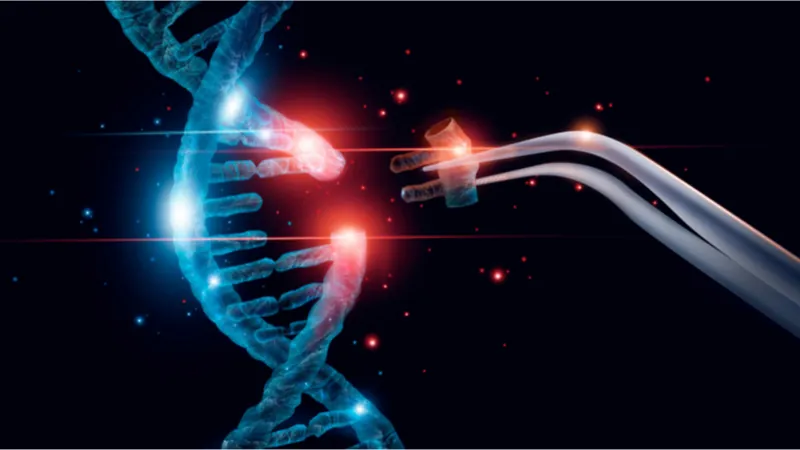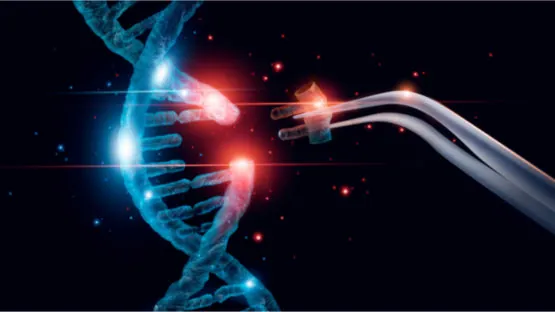A gene therapy treatment can ameliorate the loss of motor function and muscle strength in old mice, offering elderly people hope for continuing their active lives.
DOK7 is crucial for muscle function
Declining motor function is common with aging and can significantly reduce the quality of life. This decline occurs at least in part due to changes in neuromuscular junctions, the synapses that connect nerves to muscles. Studies have found increased denervation at neuromuscular junctions with aging and in sarcopenia. Therefore, researchers chose these junctions as a therapeutic target to treat age-related motor dysfunction.
The DOK7 gene is required for normal development of neuromuscular junctions; mutation of DOK7 causes a neuromuscular disease. Several years ago, a team of researchers in Japan used gene therapy to introduce a working copy of DOK7 into mice with a mutated version. The intervention improved the motor activity of the mutant mice and increased their lifespan.
Making mighty mice
Now, the team is using the same approach to see if DOK7 therapy can improve motor function in aged mice [1]. The therapy uses a recombinant muscle-tropic adeno-associated virus (AAV) as a vector to deliver a wild-type version of the human DOK7 gene to aged male mice. Male mice of the strain used in these experiments normally begin to exhibit changes in their neuromuscular junctions and experience decreased motor function when they are 24 months old, and they usually die when they’re between 24 and 32 months old.
The team injected the mice with the DOK7 therapy vector (AAV-D7) when they were 24 months old and carried out tests four months later. They found that AAV-D7 treatment enlarged the neuromuscular junctions of the mice and suppressed denervation. In fact, they report that the treated 28-month-old mice had lower levels of denervation than untreated 24-month-old mice, suggesting that AAV-D7 not only prevents denervation but even promotes reinnervation.
To find out if the restored neuromuscular junctions rescued motor function, the team subjected the mice to motor performance tests. One test measured how long a mouse could stay on a rotating rod, and a second test measured the twitch force of a hind limb muscle upon direct stimulation. The AAV-D7 treated mice did better on both tests than sham-treated mice did, showing that the therapy improved motor function and muscle strength.
Muscle denervation at the neuromuscular junction (NMJ), the essential synapse between motor neuron and skeletal muscle, is associated with age-related motor impairment. Therefore, improving muscle innervation at aged NMJs may be an effective therapeutic strategy for treating the impairment. We previously demonstrated that the muscle protein Dok-7 plays an essential role in NMJ formation, and, indeed, its forced expression in muscle enlarges NMJs. Moreover, therapeutic administration of an adeno-associated virus vector encoding human Dok-7 (DOK7 gene therapy) suppressed muscle denervation and enhanced motor activity in a mouse model of amyotrophic lateral sclerosis (ALS). Here, we show that DOK7 gene therapy significantly enhances motor function and muscle strength together with NMJ innervation in aged mice. Furthermore, the treated mice showed greatly increased compound muscle action potential (CMAP) amplitudes compared with the controls, suggesting enhanced neuromuscular transmission. Thus, therapies aimed at enhancing NMJ innervation have potential for treating age-related motor impairment.
Conclusion
This is exciting work. It’s wonderful to imagine that, with a single injection, we could avoid the motor problems we associate with growing old. That said, gene therapies have a mixed track record, so long-term safety trials would be crucial, and before that, researchers need to show that the treatment works in human cells. The paper notes that there are only a handful of studies reporting the effects of age on neuromuscular junctions in humans, and their results aren’t entirely consistent. Therefore, the first step towards an eventual therapy for people must be to better understand how human neuromuscular junctions change with age.
Literature
- Ueta, R., Sugita, S., Minegishi, Y., Shimotoyodome, A., Ota, N., Ogiso, N., Eguchi, T., and Yamanashi, Y., (2020) DOK7 Gene Therapy Enhances Neuromuscular Junction Innervation and Motor Function in Aged Mice. iScience, doi: 10.1016/j.isci.2020.101385




